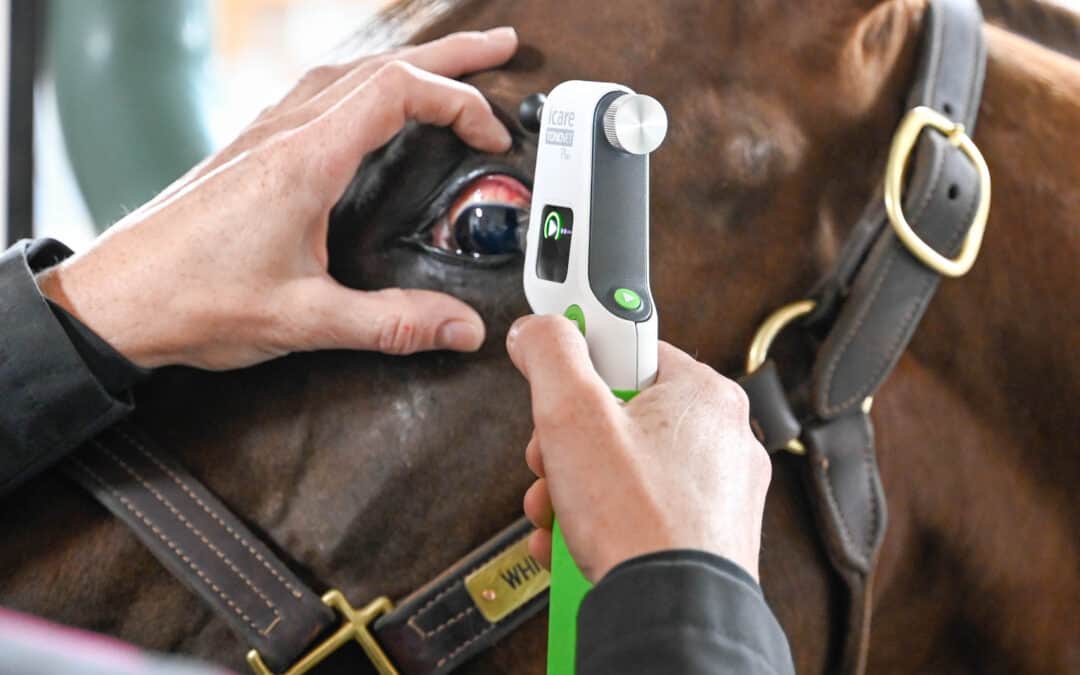Tonometry is part of a comprehensive equine eye / ophthalmic exam
We offer advanced diagnostics for equine ocular (eye) injuries and diseases as part of our ophthalmology services in Central Oregon. One of our tools is a Tonovet tonometer, which veterinarians use to measure a horse’s intraocular (within the eye) pressure and assess eye health.
Glaucoma (ocular nerve damage from increased eye pressure) and uveitis (inflammation of the eye) are two conditions tonometry can help us identify. Both can be painful for the horse and lead to loss of vision and potentially the eye itself.
The latter disease, uveitis, is more common in horses than glaucoma and can result from eye trauma, infection, genetic predisposition, or a combination of causes. Specifically, equine recurrent uveitis (ERU, also known as “moon blindness”) is a chronic autoimmune syndrome and the leading cause of equine blindness. A known cause of ERU is leptospirosis, a zoonotic (meaning it affects humans and animals) bacterial infection that can also lead to abortion and/or kidney failure in horses.
Common clinical signs of equine eye disease include squinting, light sensitivity, vision loss, redness, excessive tearing, and/or cloudy or milky-looking eyes. One or both eyes can be affected.
We consider equine eye injuries and diseases emergencies. Early intervention, diagnosis, and treatment are vital to the horse’s welfare and necessary—if possible—to preserve vision.
Tonometry is part of a comprehensive equine eye/ophthalmic exam and can also be included during the pre-purchase processes, especially when buyers are considering breeds genetically prone to eye disorders (e.g., ERU is overrepresented in Appaloosas and some Warmbloods).
